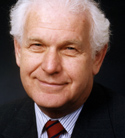It sounds so basic that it seems like a stupid question. Anyone knows what a family is — a mom and a dad and kids. OK, an extended family includes grandparents, aunts, uncles, cousins, and many others who are all biologically related in some way. This picture is my sister, her four kids with husbands and their kids. What about blended families? Are step-children and siblings family if they are not biologically related but only legally? How about adopted children? They are certainly considered family because they are legally defined as family. So what happens when our laws change to include same sex marriages and they adopt children? Now we begin to ramp up and say that legally defined family doesn’t make them real family. Enough confusion? Our Sunday School class is wisely returning to God’s basic design, intension and purpose of humankind, and the design of marriage and of family. Last week we unpacked three very fundamental principles:
PRINCIPLE 1: We are “image-bearers” of God. I was created for this purpose, to bear His image by reflecting His character. The chief end of man is to glorify God and to enjoy Him forever. We don’t glorify God by simply doing our best.
 PRINCIPLE 2: The primary human relationship is between a man and a woman. The unity between a husband and his wife is basically a Trinitarian concept. So we reflect His character in relationship because He is relational at His Trinitarian core. The Father, the Son and the Holy Spirit relate to one another in the context of total and perfect unity. So if we are to glorify Him, we reflect his character by relating intimately to one another in the context of unity. “One flesh” is more than sexual union. It is a reflection of God’s character in a Trinitarian way when two equal entities become one thing. The role of marriage comes before our roles in marriage.
PRINCIPLE 2: The primary human relationship is between a man and a woman. The unity between a husband and his wife is basically a Trinitarian concept. So we reflect His character in relationship because He is relational at His Trinitarian core. The Father, the Son and the Holy Spirit relate to one another in the context of total and perfect unity. So if we are to glorify Him, we reflect his character by relating intimately to one another in the context of unity. “One flesh” is more than sexual union. It is a reflection of God’s character in a Trinitarian way when two equal entities become one thing. The role of marriage comes before our roles in marriage.
PRINCIPLE 3: All relationship language of scripture applies to families. For example, Romans 12:9-21 talks about Christians being devoted to one another, contributing the needs of others, rejoicing with others, and responding in peace even when we have been offended, to name a few. All of these “one-another” guidelines apply to family interaction.
These principles don’t resolve the debate and they don’t solve all the problems associated with our confusion. But they do indeed lay a strong foundation that we can build on. I am thankful to Dr. Mark Fulmer for offering us such a substantive lesson.
Each Spring, I teach a class on Counseling and Civil Law. Before we explore the laws relating to divorce and marriage, we spend about a month exploring this: God’s purpose and intent for marriage and family. We can’t begin to understand how to evaluate the health of a family until we understand the beginning of the design.




 Posted by leejagers
Posted by leejagers 


